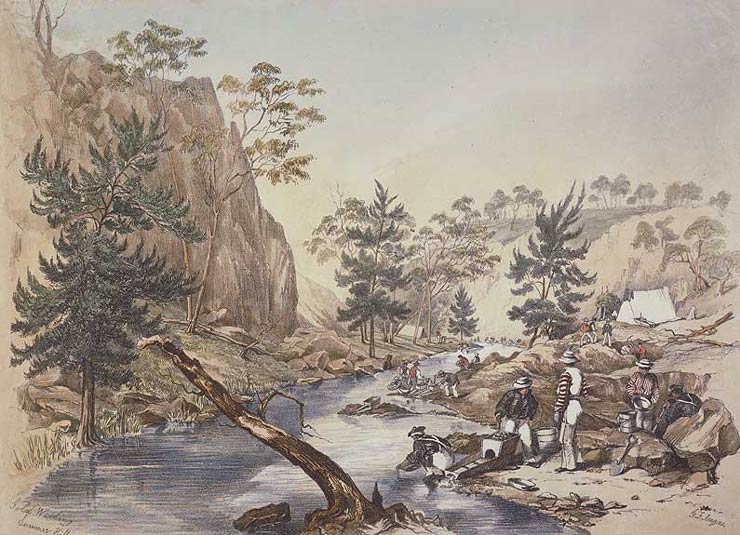 Ophir gold diggings in 1851 - asset 1
Ophir gold diggings in 1851 - asset 1
TLF ID R3039
This is a hand-coloured lithographic print of a painting by George French Angas showing a stream zigzagging through she-oaks and sparsely treed cliffs at what was to become Ophir, Australia's first gold rush site. The print shows 14 miners prospecting using several different methods. Measuring 24.2 cm x 35 cm, the print was Plate 1 in a publication by George French Angas entitled 'Six views of the gold field of Ophir'.
